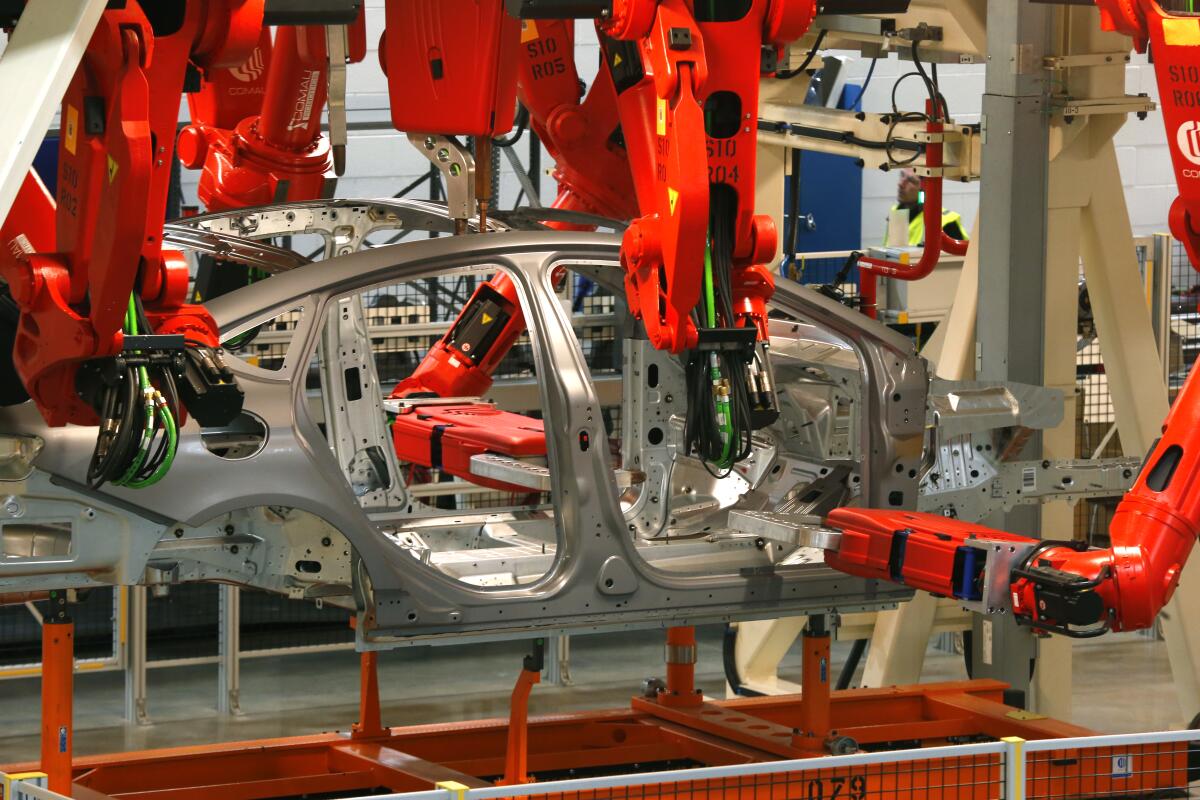Factory closures may have helped fuel the opioid crisis. Here’s how

For the last two decades, U.S. communities stricken by automotive plant closures have been hurting. And death rates among working-age adults have been rising.
Researchers have long suspected these dual trends, especially evident across the nation’s industrial heartland, are linked by an American epidemic of despair. Economic distress, population flight and the loss of local sports teams, lunch joints and barber shops have hollowed out communities that were long solidly middle class. The resulting hopelessness has been corrosive to the health of those who live in them.
But a new study suggests that in recent years, opioid drugs have done much of the actual killing.
In an extensive analysis of deaths that occurred between 1999 and 2016, researchers found that in the five years after an automotive plant shut down, counties within commuting distance of the shuttered factory experienced a far sharper rise in fatalities related to opioids than did counties in which major automotive factories remained open.
The researchers said they believe their findings provide new evidence that communities in major distress are more prone to so-called “deaths of despair” — a much-debated topic as a collection of disparate trends has driven down average U.S. life expectancy.
The higher rates of overdose deaths “seem to be a symptom of a community that’s sick,” said Dr. Atheendar S. Venkataramani, the lead author and a health researcher at the University of Pennsylvania. His group’s findings, he added, establish “a very powerful association between fading opportunity and a downturn in health.”
Researchers have long understood that the opioid epidemic sweeping the United States has hit white men and economically distressed communities especially hard.
But it’s one thing to look at a map and see red splotches of opioid death in places where white people cluster and poverty is entrenched. It’s more complicated — and revealing — to watch once-thriving communities consistently turning red in the immediate wake of a local trauma like a plant shutdown.
The authors of the new study, published this week in JAMA Internal Medicine, wanted to measure how a sudden and profound shock — the closure of an automobile manufacturing plant — would affect the health of the surrounding area.
So they combed through statistics on opioid deaths in 112 counties that either had an automotive factory or were within commuting distance of one. In all, they identified 30 “commuting zones” that surrounded automotive production plants and relied heavily on manufacturing jobs for employment. All were in the nation’s industrial Midwest or the Deep South.
Then the researchers compared the 10 commuting zones that had experienced a factory closure in the automotive sector with the 20 zones that had no such closures.
As expected, opioid fatalities rose in all of the counties over the study period. After all, few such areas have been spared the scourge of opioid addiction.
But when the researchers looked at the five years following each plant closure, they found a powerful link to opioid deaths.
In the 29 counties affected by closures, there were 20.6 opioid deaths per 100,000 people each year. That increase was 85% higher than the rates at which opioid deaths grew in the 83 counties without closures.
Venkataramani said the study doesn’t prove that the economic shock of a plant closure directly caused increased drug use. But when data from many communities generate a consistent before-and-after picture of such a dynamic, it strongly suggests that one has helped to precipitate the other.
Studying such a “natural experiment” is sometimes the only way to explore the dynamics that drive some complex social phenomena, he added.
In any of the 112 counties that were part of the study, the closure of an automotive plant would inflict pain that was likely to be felt locally in many ways. Employment and incomes would fall. Residents with the means and education to prosper elsewhere might move away.
Social institutions like clubs, churches and civic groups would falter as they lost members. And people who had counted on employment in the automotive industry might see that once-reliable route to the middle class as closed to both them and their children.
The team led by Venkataramani set aside the question of whether the pain rippling out from a factory closure was physical, psychological, economic or social.
What was important is that opioids — whether legally prescribed or illicit — are an alluring and effective balm for pain. They were, during the period studied, widely available to those who sought them. They are highly addictive. And if misused often enough, they can cause death.
Distress and despair can harm the health of a community in subtler and slower ways, discouraging exercise and encouraging smoking, speeding and other bad habits, or sapping people of energy or motivation needed to tend to their health. But the misuse of opioids can shorten lives much more quickly than many self-destructive habits. As a henchman of despair, it is an easy culprit to detect and measure.
Whether they work quickly or slowly, opioid use and other health habits of the discouraged can, over time, bend the arc of important measures of well-being. In the United States, that process is already underway.
For decades, average lifespan in the United States increased. But in a trend driven by increasing rates of early- and midlife suicide, drug overdoses and illnesses linked to excessive alcohol consumption and sedentary lifestyles, life expectancy has been stalled since 2011. In 2014, it began a backwards slide that continued in 2015 and 2016.







